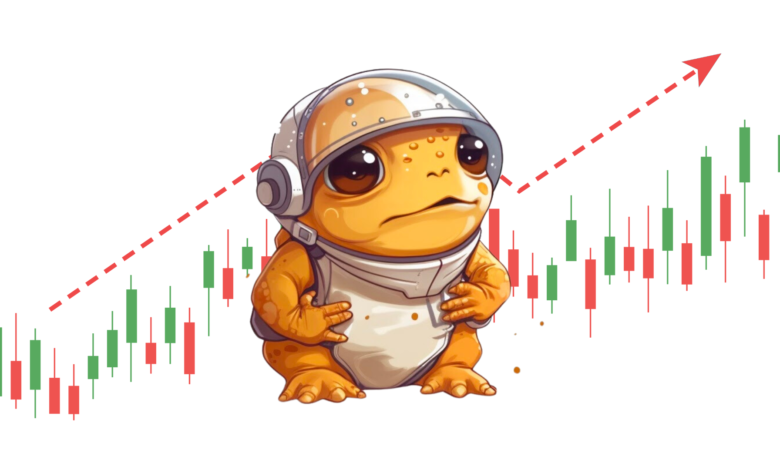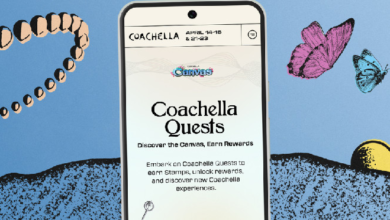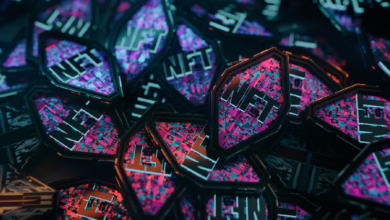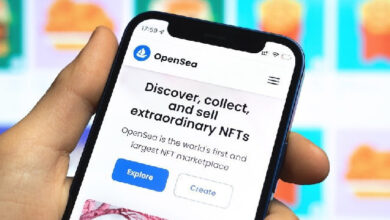How a Digital Artist Used Chat GPT to Create a $50M Meme Coin

Anything can happen in Web3. In fact, one of the most alluring aspects of the crypto and NFT space is its Wild West-like nature; play your cards right, and you might stumble into generational wealth in a way that just isn’t possible anywhere else. And while scams, fraud, and ruin certainly rank among the seemingly endless possibilities the space has to offer, it’s important to remember that innovation and even altruism do, too.
One of the more encouraging stories Web3 has seen in the last few days is the rise of $TURBO, a meme cryptocurrency created as both an experiment and piece of performance art by artist Rhett Dashwood (AKA Mankind). Mankind is a Sotheby’s-selling OG crypto artist whose work often depicts ethereal and otherwordly scenes and figures covered in saturated colors.
The gimmick behind the token’s rise? Mankind created the coin with a $69 budget and the help of ChatGPT — and with no experience in coding or creating a coin to speak of.
You might say his experiment has been a success. $TURBO currently has a market cap of $50 million and has done over $26 million in volume in the last 24 hours alone. Here’s how he did it.
Starting from scratch
“I gave ChatGPT-4 a budget of $69 and asked it to make the next great meme coin,” read Mankind’s April 23 tweet. The simple premise was the product of Mankind’s reflection on the current state of the crypto art space.
“I’ve been in crypto art for quite a few years, and this year has been absolutely dead for trying to sell digital art,” Mankind said in a recent YouTube video in which he describes his reasoning for starting the project. He’s not wrong. NFT sales volumes are at 20-month lows, and the entire Web3 ecosystem is feeling the weight of a crypto winter that nobody can see the end of.
Mankind says he figured that it was the perfect time to play around with some AI tools he’d been exploring lately, with ChatGPT being front of mind. Perhaps, he thought, he could draw people’s attention to his artwork through an experiment.
The first thing ChatGPT told him to do was flesh out the concept. This included coming up with a name for the coin, a catchy backstory, and a logo. Mankind then asked ChatGPT to further assist in the creation of a name or come up with other ideas.
As part of the experiment, he encouraged his Twitter followers to help him with the decision-making process. Giving them four options from GPT’s suggested list of ten meme coin names — HypeHound, AstroCorgi, FomoFeline, and TurboToad — his followers overwhelmingly selected TurboToad as the way to go.
After coming up with a name for the coin’s mascot, a character called Quantum Leap, Mankind used Midjourney to help him create the logo. Again polling his followers to choose the mascot image, he settled on a cute, Pixar-esque image of a yellow-orange toad character wearing a spacesuit.
Code big or code home
At this point in the experiment, Mankind encountered a hurdle. ChatGPT’s capabilities are limited as the program is trained on data up until September 2021, with no access to developments beyond that point. This caused the artist to consider how the lack of access to trends in the coin economy beyond that point might affect the kind of information he was getting from the AI. After feeding new and updated context back into ChatGPT, the AI gave him new information and advised him to write the code for the project. The only problem was that he had no idea how to code.
“This was probably the first stumbling block,” Mankind said of his experience. It was problematic because the AI had instructed him to go learn how to code, something he had neither the time nor desire to do. So, Mankind’s natural next question was, “Can you help me do the Solidity coding?” After hours of back and forth with Mankind and the AI creating and checking the code together, the artist succeeded.
By the end of the first day of the experiment, Mankind had developed the concept of the coin, the tokenomics, its white paper, and had 75 percent of its smart contract written.
“I thought that was amazing. In one day, to be able to get that far.” Mankind said.
His next step was to get an audit of the code. After asking his followers if anyone could check the code for him, a few people volunteered to give him some advice, which he then fed back into GPT to optimize the code. By the end of day two of his experiment, Mankind had finished the smart contract for the coin and begun building the project’s website and social channels.
After a failed launch of TurboToad that saw bots swoop in and ruin the experiment by snatching up most of the liquidity pool, throwing the price out of proportion and preventing him from adding more liquidity to the project, Mankind decided that was the end of the line. He had sunk around $600 at this point (well beyond the $69 budget he began with) and didn’t have the funds to try again.
Thankfully, his community came to the rescue. After polling them on what he should do next, his followers said to find a new way forward. With ChatGPT’s help, Mankind decided to crowdfund, promising contributors that they would be equitably rewarded with the token for whatever they put in to help fund the project. After choosing a new name for the token, Turbo ($TURBO), he decided that the total supply would be 69 billion tokens, with 60 billion reserved for the community and the rest for himself as its core contributor.
The community voted for a way forward. Here it is!https://t.co/XE798VTRtw
— Rhett Mankind (@rhett) April 26, 2023
Turbo, take two
By this point in the experiment, Mankind felt the project was beyond him. He didn’t own the majority share of the token and had encouraged his followers to take the project in whatever direction they wanted, whether that be starting up a Telegram channel or creating a Discord for the coin.
They did just that, and as the meme coin began to gain the attention of artists noting how innovative the experiment was, Mankind polled his followers to see what they wanted to do next with the project. Their response was to increase liquidity. As $TURBO continued picking up steam, it received a major boost from well-known Web3 collector Pranksy, who made a V3 liquidity pool, which solved the problem the community shortly before voted to address.
In the first 48 hours of the launch of the new version of $TURBO, the coin reached a $1 million market cap, something that was far beyond anything Mankind had envisioned would happen for the project. Now, the token is spreading like wildfire throughout the Twitterverse, with some of its most notable commentators and influencers praising Mankind for the idea and its success.
As the groundswell continues, Mankind has his sights set on decentralizing the project, polling his followers on whether or not it’s the right to renounce ownership of the project’s smart contract, making it inaccessible. While the poll has yet to conclude, a majority of followers have so far indicated that it’s time to do so.
Unexpected innovation, unexpected good
The NFT space has a well-earned reputation for fraud and for shady actors, but $TURBO’s story is one that reminds Web3’s critics and supporters of its ability to do good as well. As $TURBO continues to rise, Mankind’s experiment has long past the point where it could be described as a success. While claims of holders in the project Discord being able to pay off house loans due to the meme coin have yet to be substantiated, there’s no question that it’s changing things for the better for its creator.
“Just to think that my daughter could look up to me and see something that I’ve done is successful; that was awesome as well,” Mankind said in his recent video. “So many things have come out of this that it’s overwhelming because it has already taken on a life of its own that is far beyond me. Just to know that I put in momentum something that could take on a life of its own is really special.”





